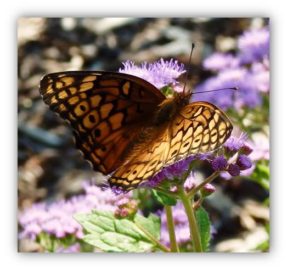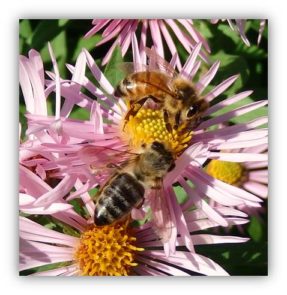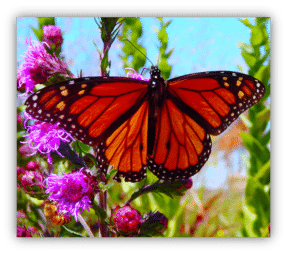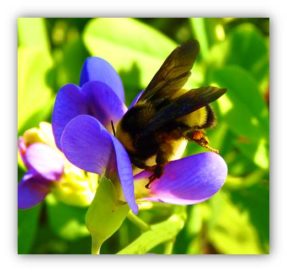Why Pollinators?
Pollinators play a vital role in our environment and our economy: 75% of all flowering plants rely on animal pollinators. This includes 1/3 of all foods and beverages, which amounts to nearly $20 billion worth of products annually. Without pollinators, we would lose many of our favorite goods, including blueberries, apples, coffee, almonds, and chocolate.
Over 200,000 species of animals act as pollinators. Of those, about 1,000 are hummingbirds, bats, and small mammals. The rest are insects such as beetles, bees, ants, wasps, butterflies, and moths.
Pollinators in our Demo Garden
Five Surprising Facts About Pollinators:
- Most bee species don’t sting. Although all female bees are physically capable of stinging, most bee species native to the U.S. are “solitary bees,” meaning they don’t live in colonies and don’t sting unless they are physically threatened or injured. Only honey bees are defensive and may chase someone who disturbs their hive.
- Beetles are responsible for pollinating 88% of the world’s 240,000 flowering plants. Beetles also make up 25% of all known animal life-forms, with approximately 400,000 unique species.
- A small percentage of North American pollinators migrate long distances. Some of these pollinators include lesser long-nosed bats, rufous hummingbirds, ruby-throated hummingbirds, and monarch butterflies.
- In 2015, researchers discovered the first known underwater pollinator. A species of Caribbean seagrass, Thalassia testudinum or turtlegrass, relies on zooplankton and other bottom-dwelling invertebrates to pollinate its flowers.
- Many animals serve as pollinators worldwide. Lemurs are the world’s largest pollinator while honey possums pollinate Australian banksia and eucalyptus flowers. Other surprising pollinators include geckos, swift parrots, rainbow lorikeet (a species of parrot), and the Cape grey mongoose.




Recent News & Blog Posts
Plant Trees for Pollinators!
Most pollinator gardening guides are focused on flowering perennials, which is why trees and shrubs are often overlooked as sources of pollinator habitat. Many trees flower early in the spring and provide an important nectar source before most perennials even break dormancy. The woody branches provide shelter and nesting sites for birds…
Read More
Adopt a Bee-Friendly Lawn Care Routine
The ideal American yard is full of lush, green grass without a weed in sight. Every year, Americans spend billions of dollars on lawn care products such as fertilizers, pesticides, and irrigation. In fact, with 40 million acres of turf grass across the country, turf is now the largest irrigated crop in the United States…
Read More